- Call us: 01444 237070
- Contact Us
- Stores
- Sign In / Register
-
- Back
- Used Cameras
- Used Accessories
- Used Lenses
- Used Video
- Used Film Equipment
- Used Stock Alert
- Used Blank Test
- Sell or Part Exchange
- Used Clearance
- Recently Added Used Equipment
- Park Picks
- All Used Black Friday Deals
- Faulty
- Trade-In
- Blog
- New in
- Call us
- Contact us
- Stores
- Sign in
- Categories
- Tips & Inspiration
- Reviews
- News
- Events
- Features
- Buying Guides
- Competitions
Canon R1 First Look Review
An early development announcement of the Canon R1 sent the market into a frenzy of speculation about the features, which would be included in the first ever flagship mirrorless EOS R camera. Although some details were teased, it wasn't until the Canon R1 release date in July 2024 that the full specifications were finally revealed.
Canon EOS R1 | Hands On In-Depth First Look Video Review
Canon's EOS-1 series has a distinguished 35-year history, and the hybrid mirrorless flagship has a lot to live up to. Our Canon R1 First Look Review explores this cutting-edge body, compares it with the R5 Mark II, which was released on the same day, and provides specs, a hands-on video review, and sample images from Gareth’s experience with the new model.
So whether you’re simply curious about its features, keen to know how it will help shape the photography market, or have been patiently waiting for this high-speed option for your own photography, we’ve got everything you need to know right here.
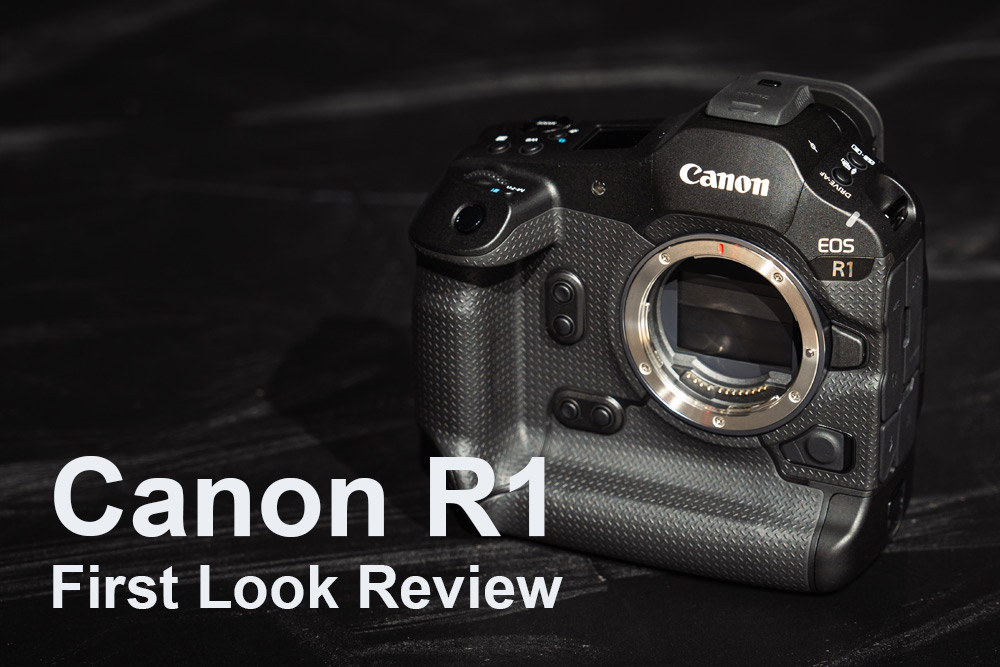
When did the Canon R1 launch and how much is it?
Let's get down to brass tacks. Priced at £6999.00, the Canon R1, which was released on July 17, 2024, is unquestionably Canon’s most advanced flagship camera. It arrives four years after the 1D X Mark III and joins the new R5 Mark II, which was released the same day.
This move surprised some creators, who may not have been expecting both of Canon’s high-end mirrorless cameras to be released simultaneously. However, as they share around 75% of the same technology it does make sense, and our review seeks to differentiate these two bodies, in order for you to understand the differences – and similarities between them, and how that impacts your content creation.
With that in mind let’s find out more with a specs comparison table, which is included below.
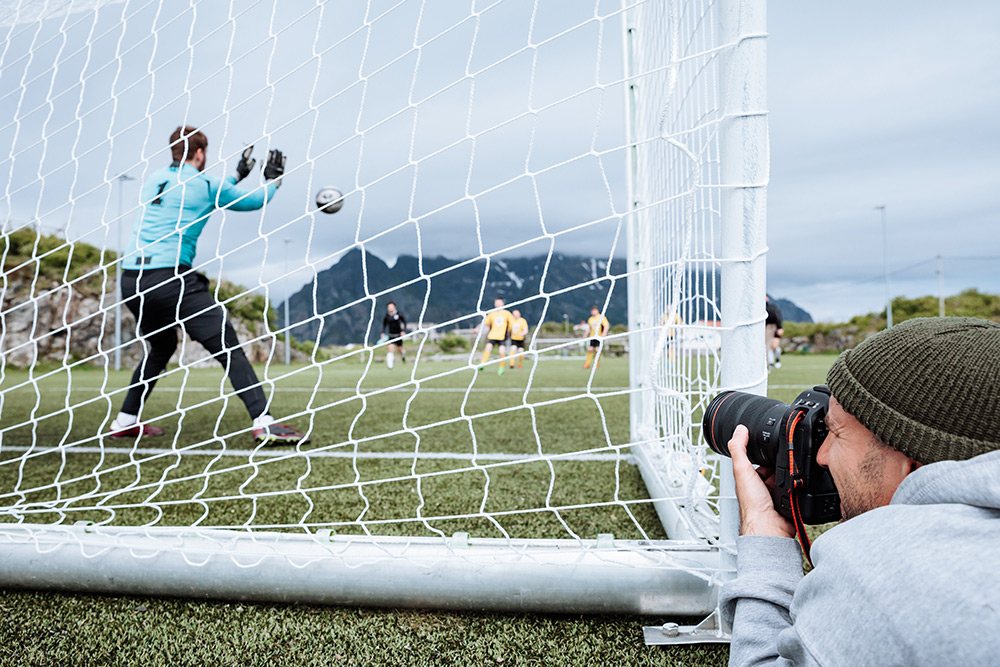
Canon R1 Vs R5 Mark II Vs R3
These are the most advanced EOS cameras ever made, and despite sharing many features and technologies, they remain distinct enough to appeal to different audiences. The table below compares these model’s key specs and features.
|
|
EOS R5 Mark II (New) |
EOS R1 (New) |
|
|
Sensor |
45 MP BSI Stacked Full-Frame ISO 100-51200 (extendable to ISO 102400) with deep learning noise reduction |
24.2 MP BSI Stacked Full-Frame ISO 100-102400 with deep learning noise reduction |
24.1 MP Full-Frame ISO 100-102400 |
|
Processor |
DIGIC X + DIGIC Accelerator |
DIGIC X + DIGIC Accelerator |
DIGIC X |
|
Battery grip |
Optional: |
Yes, integrated |
Yes, integrated |
|
Stabilisation |
5-axis in-body IS. Up to 8.5-stops with compatible RF lenses |
5-axis in-body IS. Up to 8.5-stops with compatible RF lenses |
5-axis in-body IS. Up to 8-stops with compatible RF lenses |
|
Continuous burst speed |
12fps using Mechanical Shutter, 30fps using Electronic Shutter with pre-continuous shooting using Electronic Shutter, all with Servo AF Pre-continuous shooting 15 frames before the shutter was pressed with full AF, AE and tracking. |
12fps using Mechanical Shutter, 40fps using Electronic Shutter with pre-continuous shooting using Electronic Shutter, all with Servo AF Pre-continuous shooting 20 frames before the shutter was pressed with full AF, AE and tracking. |
12fps with Mechanical Shutter, Servo AF 30fps with Electronic, silent shutter and Servo AF |
|
Buffer Approx. |
|
|
|
|
ISO range |
100-51,200 with deep learning noise reduction available |
100-102,400 with deep learning noise reduction available |
100 to ISO 102,400 (expands to ISO 204,800) |
|
Autofocus |
Dual Pixel Intelligent AF |
Dual Pixel Intelligent AF |
Dual Pixel CMOS AF II |
|
AF Working Range |
EV -6.5 to 21 (at 23°C & ISO100) |
EV -7.5 to 21 (at 23°C & ISO100) |
EV -7.5 to 21 (at 23°C & ISO100) |
|
Metering Modes |
Real-time with image sensor, 6,144-zone metering |
Real-time with image sensor, 6,144-zone metering |
Real-time with image sensor, 384-zone metering |
|
Max shutter speed |
1/32,000 |
1/64,000 |
1/64,000 |
|
Video recording |
|
|
|
|
Picture profiles |
|
|
|
|
Max Movie length |
360min |
360min |
Max duration 6 hours. (excluding High Frame Rate movies |
|
Viewfinder |
0.5-inch OLED colour EVF with 5.76 Million dots (1600x1200) |
0.64-inch OLED colour EVF with 9.44 million dots (2048x1536) |
0.5-type 5.76-million dot OLED |
|
LCD screen |
8.0 cm (3.2") TFT colour LCD, Approx. 2.1 million dots |
8.0 cm (3.2") TFT colour LCD, Approx. 2.1 million dots |
8cm / 3.2 inch 4.15 Million Dot LCD |
|
Interface |
|
|
|
|
Memory cards |
Dual Card Slots - CF Express / SD card |
Dual Card Slots - 2x CF Express |
Dual Card Slots - CF Express / SD card |
|
Eye Control AF |
Yes |
Yes |
Yes |
|
WiFi 6E + 2.5 Base T ethernet connectivity |
Yes |
Yes |
N/A |
|
In-camera image upscaling |
Yes, 180MP |
Yes, 96MP |
N/A |
|
Dual Shooting (stills / movie) |
Yes |
Yes |
N/A |
|
Registered people priority |
Yes |
Yes |
Yes |
|
Battery |
New LP-E6P Enhanced Battery Pack (Also Backwards compatible with LP-E6NH, although some features won’t work) |
||
|
Battery life |
|
|
|
|
Weight with card and battery, approx. |
746g |
1115g |
1015g |
Although technology is converging, this comparison clearly highlights the primary differences between the two new high-end hybrid models and the existing R3. The R5 Mark II is a high-resolution option whereas the R1 is the ultimate high-speed option.
The R1 features a higher resolution EVF, faster burst in electronic mode, faster Pre-capture, larger buffer capacity and significantly better battery life, although the R5 M2 does offer optional battery grips.
As the defining sports camera R1 users gain better low light focusing and a higher maximum ISO, although both cameras offer new noise reduction technology.
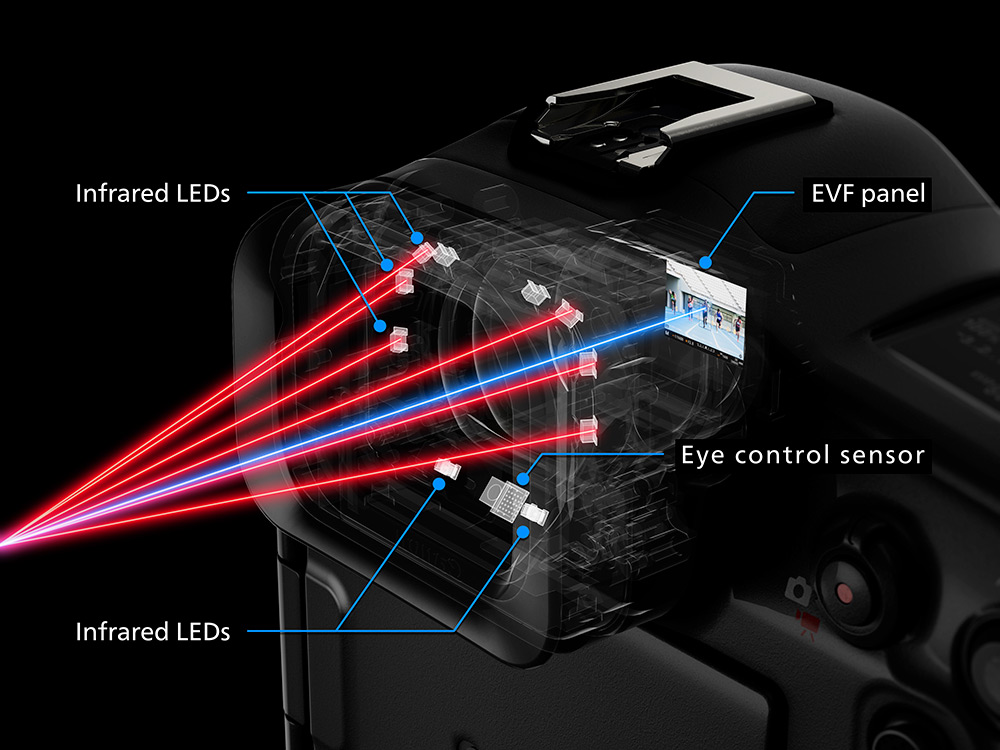
What’s new in the R1?
As the first mirrorless flagship, the R1 introduces a number of brand new technologies never before seen on an EOS camera. These join refinements of features ported from the R3, and marks a significant leap in Canon's camera technology.
Advanced features include:
- The adoption of a new DIGIC Accelerator alongside the DIGIC X processor
- New stacked sensor with minimal rolling shutter and 1/64,000 max. shutter speed
- Enhanced Dual Pixel Intelligent AF system with deeper AI integration and new AF modes
- New Pre-Shooting Mode, similar to the R6 Mark II, which captures up to 20 images prior to fully pressing the shutter button
- First EOS Dual Shooting with simultaneous Full HD video and 17MP (16:9) photos recording to two CFexpress memory cards (Type B, max 2TB, compatible with CFexpress 2.0 and VPG400)
- Ultra-high resolution 9.44 million dots EVF
- Neural network noise reduction with up to ISO 102,400
- In-camera image upscaling to 96MP using deep learning technology
- Eye Control AF, which is improved vs the R3
- Registered people priority stores up to 10 faces for recognition and tracking
- 8.5 stops in-body Image Stabilisation
- Enhanced white balance and metering across 6,144 zones
- Stable Wi-Fi 6E with MIMO antennas and 2.5G BASE-T ethernet
- 6K video using frame rates up to 60p
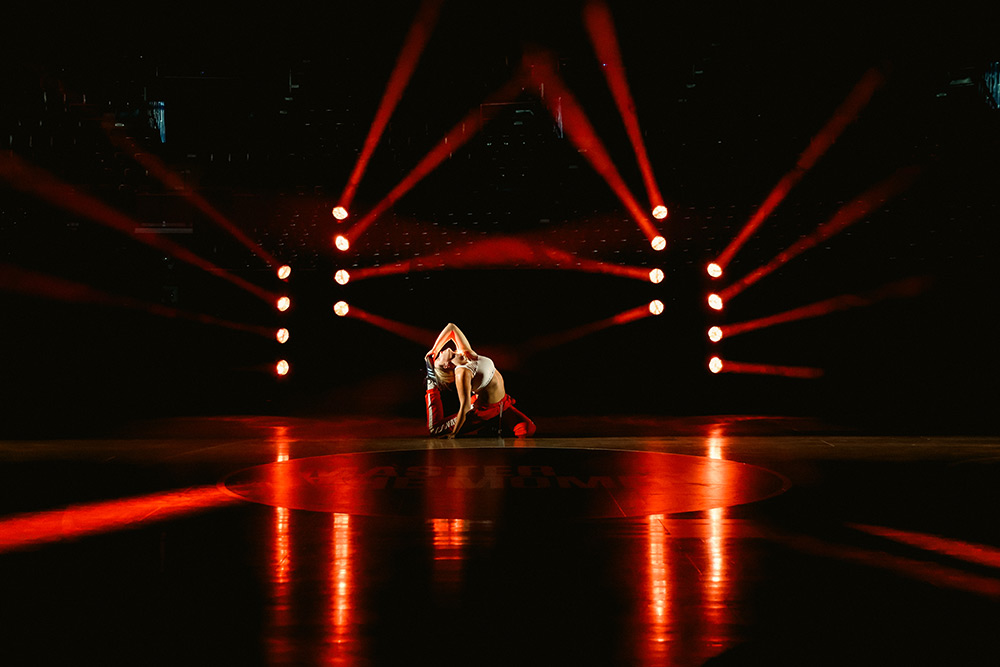
Sample image captured with the RF 24-105mm f/4.0 L USM Lens @50mm
Camera settings: 1/400 sec. f/4.0 ISO 8000
Which AI features are adopted for content creation?
The R1 joins the AI revolution with a number of features built around deep learning technology, which includes everything from the sensor-level Autofocus system to noise reduction and image upscaling.
- The Dual Pixel Intelligent AF system features new Active priority AF and other modes with advanced subject recognition, obstacle avoidance when tracking and predictive AF features. These are all designed to better acquire and maintain focus on fast moving subjects, irrespective of subjects crossing, or going behind team mates and obstacles in team sports. Deep-learning and Cross-type AF identifies and tracks subjects more efficiently than ever.
- New in-camera image upscaling to 96MP builds on sensor-shift high-resolution technology to create detailed images using deep learning technology, negating the need for a tripod in many situations.
- Noise reduction adopts deep learning in the same way as post-processing apps now offer AI-driven noise reduction technology.
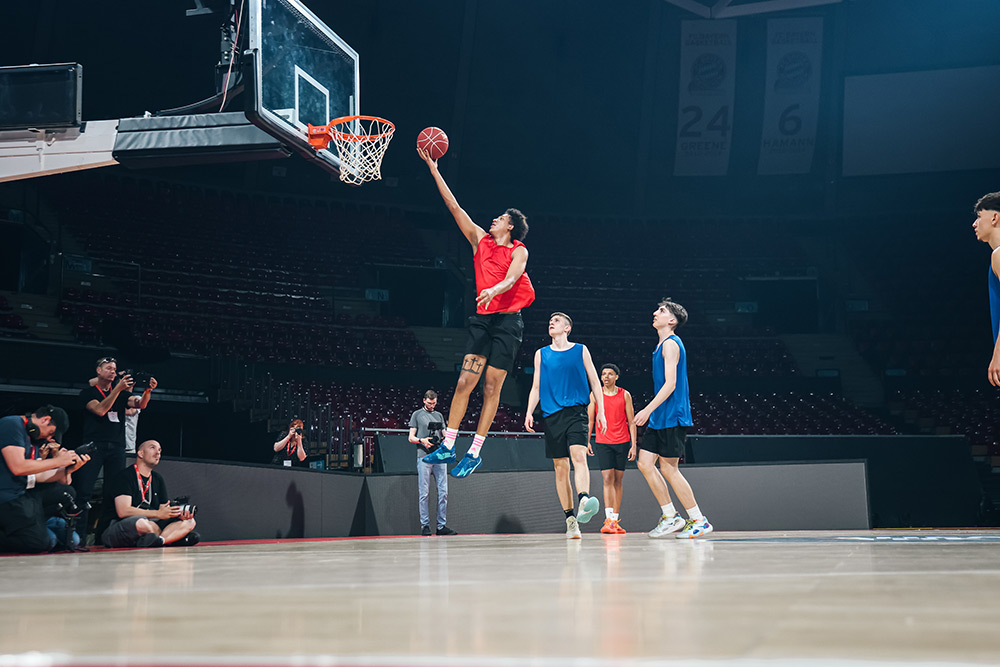
Sample image captured with the RF 24-105mm f/4.0 L USM Lens @45mm
Camera settings: 1/800 sec. f/4.0 ISO 4000
What do the sensor and dual processors accomplish?
The newly developed DIGIC Accelerator, combined with the DIGIC X processor, handles larger volumes of data for faster processing and enables the new AF system and faster shooting speeds. Simply put, the EOS R1 is the fastest camera Canon has ever produced.
The core components also enhance image quality, capturing a wide dynamic range with extremely fast readout speeds to minimise rolling shutter from the stacked 24MP sensor. Additionally, they improve white balance and metering, offering 6,144 metering zones, or 16 times more than the R3. This results in more accurate metering with precise colours and tones achieved in-camera, reduced noise, and enhanced AF in low light conditions. Not only is this the fastest camera, but also the most accomplished ever made by Canon.
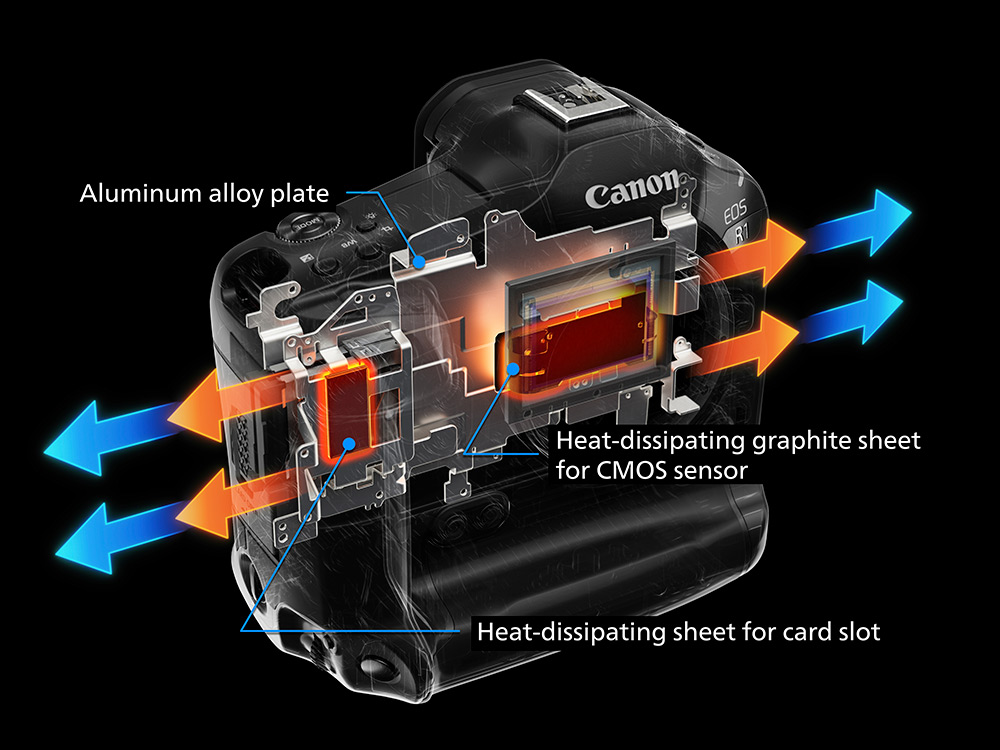
Hybrid content with powerful video
The R1 is a hybrid camera, delivering stunning 6K video at up to 60fps across a variety of formats. With Dual Shooting, you can simultaneously capture Full HD video and 17MP (16:9) photos, ensuring you don't miss any moments from an event while capturing high-quality stills and videos.
Thanks to proficient cooling, movie length can reach up to a maximum duration of 6 hours. You can choose from various sizes, including 6K DCI (17:9) 6000 x 3164 (59.94, 50, 29.97, 25, 24, 23.98 fps) RAW and Light RAW. The camera supports internal recording of 6K RAW 12-bit and 4K/2K/Full HD in YCbCr 4:2:0 8-bit or YCbCr 4:2:2 10-bit, offering options for producing the most professional movies from the field, which can be shared with clients faster than ever.
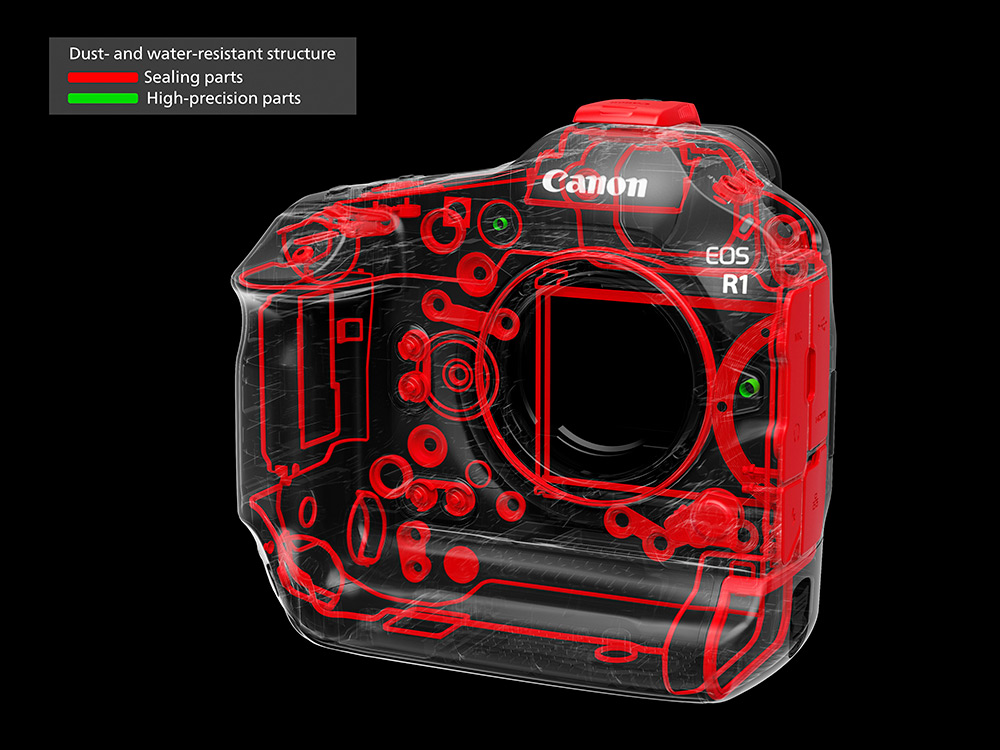
Ergonomics body design and build
With an integrated grip the R1 houses a powerful battery, offers native vertical shooting and expels heat efficiently. The body features a rubberised texture for excellent grip and is made from durable Magnesium Alloy and polycarbonate with glass fibre. It also provides class-leading weather sealing and anti-fogging seals.
As expected, the camera is highly customisable, with numerous options to streamline the body to suit your workflow, right down to customisable drive mode shooting speeds. A built-in Low-Pass Filter reduces moiré, there’s an integrated cleaning system, a soft-touch electromagnetic release, and dual card recording with Proxy recording capabilities.
Metadata tagging can be set in-camera, including image ratings, IPTC data, news metadata, and image transfer captions, which can be delivered across numerous network options.
The R1 is built for durability, versatility, and reliability, with convenient features throughout to help professionals capture and share content quickly and accurately.

Sample captured with the RF 24-105mm f/4.0 L USM Lens @63mm.
Camera settings: 1/800 sec. f/4.0 ISO 5000
Who is the EOS R1 series of cameras for?
Canon’s flagship 1-series camera is designed to deliver the very best that the EOS R system has to offer, incorporating the advanced RF lens mount exceptional speed, and outstanding autofocus. This camera is ideal for professional sports, wildlife, events, or photojournalism, where speed, accuracy, and reliability are critical.
It’s also suited to low light settings such as concerts, weddings, and corporate events, as well as other assignments in dimly lit venues. With its 4K 120p and 6K RAW recording capabilities, it's perfect for creators who need to produce high-quality video content alongside their stills, in support of current trends in multimedia content creation.

Sample 4 captured with the RF 24-105mm f/4.0 L USM Lens @74mm
Camera settings: 1/1000 sec. f/4.0 ISO 10000
With advanced connectivity including WiFi 6E + 2.5 Base T ethernet, the R1 is ideal for sports shooters and photo journalists who need to get content to the editor or client for timely publication. Additional features like standardised file naming conventions, FTP multi-threading, and automatic access point recommendations support a seamless workflow from capture to publishing, making the R1 the most comprehensive tool ever made by Canon for professional creators.
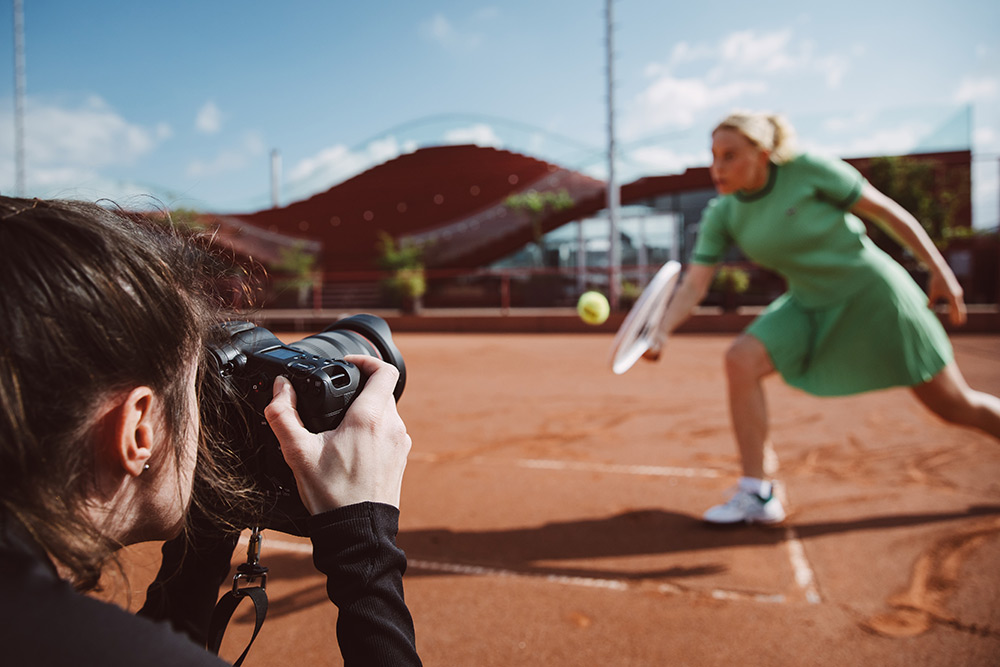
Discover more and reserve your Canon R1 camera body today, and experience cutting-edge technology designed for professionals.
If you’re upgrading from another body or selling other unwanted gear, take a moment to get a free trade-in quote and use the money you make to offset against the price of the R1.
Share this post:
By Nick Dautlich on 18/07/2024
Nick Dautlich
Senior Content Writer and Product Reviewer
Nick Dautlich is the Senior Content Writer and Product Reviewer at Park Cameras, with over 15 years of photography experience. A Sony Imaging Professional and expert reviewer, Nick has worked with major brands such as Canon, Sony and Nikon. His work is also featured on Vanguard World UK’s website, Capture Landscapes, and Shutter Evolve. Nick’s photography includes National Trust projects and magazine covers and he is passionate about landscapes and storytelling. Nick also enjoys hiking and teaching his children about nature. Learn more on his profile page.

Trade in your old equipment
Fast and easy trade in service ensures your old gear is collected efficiently and you are paid quickly! It's very simple to trade in your unwanted photography gear. Just head over to our dedicated Sell or Part Exchange page, fill out the details, and we'll get back to you with an offer for your old gear. Take the cash, or put it towards the cost of your new gear. It's up to you! Find out more
sign up to the newsletter
Keep up to date on the latest photography news, events and offers. Sign up now
